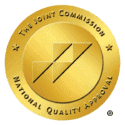
Using EMDR for Treating Addiction
EMDR was originally developed to help individuals affected by PTSD and trauma. Over the decades, it has also been effectively used to treat other mental and behavioral health concerns, including addiction.
How Does EMDR Therapy Work?
EMDR is short for eye movement desensitization and reprocessing. As its name suggests, this therapy uses rapid bilateral (side-to-side) eye movements to alleviate psychological distress associated with traumatic memories.
EMDR therapy was developed by Dr. Francine Shapiro in the late 1980s. The first controlled study on this approach was published in 1989, and training sessions for other providers began in 1990.
In its modern form, EMDR is an eight-phase approach:
- History and treatment planning – This phase involves discussing symptoms to assess suitability for EMDR and identify focus areas for later.
- Preparation – During this phase, the therapist explains the EMDR process to the patient and helps them develop appropriate expectations. This is an important time for establishing a productive alliance between the therapist and the patient.
- Assessment – This is when the therapist and patient identify a specific memory to target. This is also the time for the patient to describe the negative emotions and images that result when they recall this memory.
- Desensitization – The fourth phase involves the patient’s use of bilateral eye movements or a similar activity while recalling the traumatic memory. This will be repeated until the patient no longer experiences the distress that they identified during the assessment phase.
- Installation – During the installation phase, the patient begins to associate a positive emotion with the traumatic memory.
Body scan – After installing the positive emotion, the patient checks for muscle tension or pain when recalling the traumatic memory. - Closure – Once the therapist and patient have reached the fourth phase, every session will end with a closure activity. This prevents overwhelming distress from the traumatic memory, as desensitization and installation can take several sessions.
- Reevaluation – Each future session will start with a reevaluation to determine the best focus.
How Does EMDR Treat Addiction?
The eight phases of EMDR have proven effective in overcoming negative emotions associated with distressing memories. But how can these steps benefit someone who is attempting to end their compulsive use of alcohol or another drug?
Many people who develop substance use disorders began abusing alcohol or other drugs as a means of coping with or blocking traumatic memories. Using EMDR for addiction treatment can eliminate the need for this misguided form of self-medication. When a person’s memories are no longer a source of extreme emotional distress, they won’t need substances to elevate their mood or temporarily numb themselves.
EMDR for addiction doesn’t always have to focus on painful memories. For example, this approach can also help people develop healthier responses to memories of pleasurable experiences from substance abuse. This can prevent these memories from undermining their recovery and pushing them back into active drug abuse.
The potential value of EMDR for addiction highlights the need for a comprehensive, personalized approach to ending compulsive substance abuse. While it may not suit everyone, for some, it could be crucial for successful, long-term recovery.
Where to Find the Best EMDR Therapy for Treating Addiction?
The effectiveness of EMDR depends greatly on the skill and experience of the therapist. For addiction, it’s crucial to integrate EMDR into a comprehensive plan that addresses all your needs.
At Sanctuary Treatment Center, EMDR is one of several evidence-based therapies we may include in a patient’s treatment plan. Before you begin to receive care at our center, you will complete a thorough assessment. The information that we gather during this assessment will help us to select the services that are most appropriate for you.
Your assessment will also help us determine which level or levels of care are right for you. Many people start in our residential program and then move to our PHP and IOP for ongoing support.
Contact Us About EMDR for Addiction
Sanctuary Treatment Center offers a dynamic array of customizable services, including EMDR for addiction, to help people achieve successful, long-term recovery.
To learn more about EMDR for addiction or any other aspect of our care in Los Angeles, please visit our Contact Us page or call us today. We look forward to answering your questions and helping you decide if Sanctuary Treatment Center is the right fit for you or your loved one


